Dungeons & Dragons 5E sorcerer class explained
Choose the right equipment, spells and origin to create the ultimate sorcerer in D&D 5E.
There are a multitude of magic-users in the world of Dungeons & Dragons 5E, but sorcerers are arguably one of the most interesting ones, and knowing how to play as a sorcerer is a big part of that. Unlike warlocks and clerics, sorcerers don’t rely on another being for their powers. They also don’t need to keep their spells in tomes like wizards. Instead, sorcerers acquire their abilities through more esoteric means and discover new spells by gaining experience. Think of sorcerers as being a bit like the ‘chosen one’ archetype you find in a lot of fantasy literature - whether it’s through birth or a chance encounter, they’re special because they were made that way.
Some sorcerers can harness magic thanks to the powers of an ancient ancestor - such as jinns or demons - whereas others stumble across it through an interaction with an inherently magical being. Either way, sorcerers have an innate ability to cast a wide variety of spells in various different ways. The sheer amount of spells a sorcerer can learn can come across as overwhelming at first, but it gets a lot more manageable when you have a clearer idea of the kind of magic you want your character to perform.
D&D 5E sorcerer class guide
- Sorcerer starting proficiencies and equipment: Work out which skills you want your sorcerer to focus on and what useful tools you want them to carry.
- How do sorcerers cast spells?: Discover which ability score governs a sorcerer’s spellcasting and how you cast spells.
- What are the best starting sorcerer spells?: Choose your sorcerer’s list of starting spells and figure out what kind of spellcaster you want to make.
- How do Sorcery Points work?: Learn about Sorcery Points and what your character can do with them.
- What is Metamagic and how do you use it?: Get your head around the Metamagic feature and select which options you want.
- Which Sorcerous Origin should you pick?: Find out what makes the two main Sorcerous Origin options different and which one you should pick.
- What’s the best race for a sorcerer in D&D 5E?: If you’re interested in combining a certain race with the sorcerer class, discover which might be the best for your character.
Your options for spell-casting are affected by the type of Sorcerous Origin you choose for your character. Each Sorcerous Origin in D&D 5E comes with its own set of spells and features that may give you a firmer idea of who your character is. For example, does your sorcerer specialise in a particular school of magic - such as conjuration or evocation - or are they a well-rounded kind of spell-caster? Find out the answers to these questions and more with this guide to the sorcerer class in Dungeons & Dragons 5E.
Sorcerer starting proficiencies and equipment
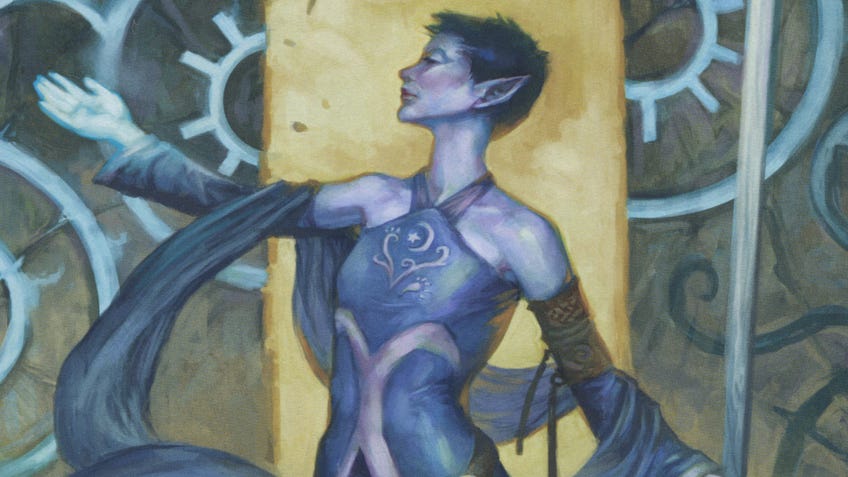
As sorcerers are primarily magic-users, all of their starting proficiencies are based around brains rather than brawn. If you’re hoping to craft some sort of muscle-bound magical gym monster, then the best of luck to you! Sorcerers don’t really get many opportunities to acquire more skill proficiencies in later levels, because their advantages come from their spell-casting and not necessarily how handy they are with a set of tools. However, this doesn’t mean that your choice for starting proficiencies doesn’t matter, as these can help your character on the way to greatness.
For example, selecting a double whammy of proficiency in deception and intimidation can turn your sorcerer into one hell of a fast-talker, perfect for getting out of sticky situations. Alternatively, choosing arcana and religion can give your sorcerer access to the knowledge they might need to uncover the mysteries behind strange relics or any literature the party might find. Thinking about what kind of person your character is can also help with this decision - are they someone good with words or better with books?
In terms of the starting equipment your sorcerer can take, you’ll be disappointed if you were hoping for an arsenal of weaponry. After all, sorcerers can dive into their impressive collection of spells if they want to attack anyone, so they don’t need weapons. If you are set on having one from the off, then you can choose to take either a light crossbow - for ranged attacks - or any simple weapon. When it comes to melee weapons, Sorcerers are proficient in using daggers and quarterstaffs, that’s about it. Seeing as you get two daggers regardless of what you pick, it might be worth selecting another ranged weapon if you’re not happy with a crossbow.
Alternatively, you can take a component pouch or arcane focus - if your DM plans to require components for spellcasting. Otherwise, you can pick between the more practical options with either a dungeoneering or explorer’s pack.
How do sorcerers cast spells?

As with all classes in D&D 5E, sorcerers cast their spells using one of the particular ability cores present in the RPG. In this case, you’ll be using your character’s charisma ability modifier to cast spells, along with your proficiency bonus. In order to hit an opponent with a spell, sorcerers must add their spell attack modifier to their roll. This attack modifier can be worked out by adding up your charisma modifier and proficiency bonus - a specific modifier that every D&D 5E character has.
Some spells might have the victim rolling a saving throw in order to shrug off part or all of the effects - in that case, they’ll be attempting to beat your sorcerer’s spell save DC. This is worked out by combining your proficiency bonus and charisma modifier, before adding eight to the total. Should an enemy roll over this number, they will succeed in saving against all of the effects of your spell.
What are the best starting sorcerer spells?
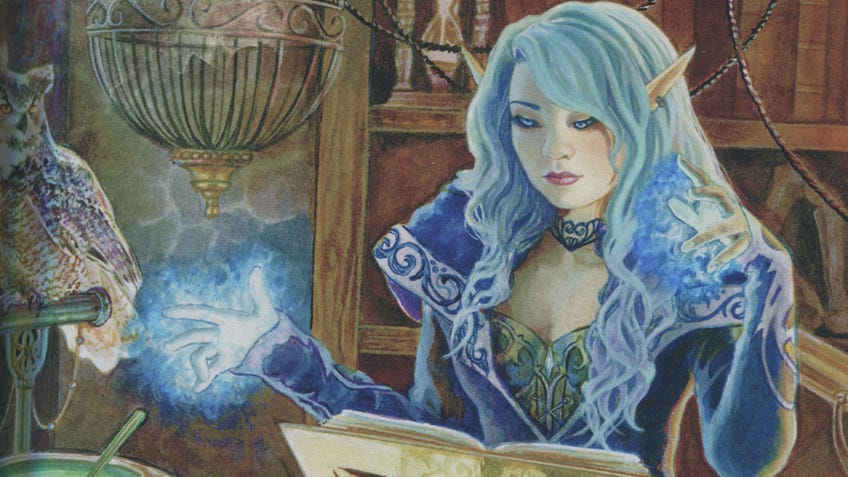
Being able to cast loads of spells in the biggest draw to playing a sorcerer in D&D 5E. As your character gains more levels, they’ll be able to learn a greater number of more powerful spells. They’ll even be able to switch out old spells for whichever new ones you fancy learning.
That isn’t to say you don’t get access to a decent amount of spells from the off; sorcerers can learn a whopping four cantrips and two first-level spells from the beginning. This might not seem like much, but if you’re aware of how many spells most first-level Dungeons & Dragons 5E characters start off with, that’s actually quite impressive. Every additional level will give your sorcerer even more spells slots to work with - meaning that your character can learn up to the amount of spells they have for each spell level - but, for now, we’re going to help you figure out the best spells to start your character out with.
When it comes to sorcerer cantrips, you’ve got a wide range of different kinds of spells to choose from. Whilst some do straightforward elemental damage, others are designed for more strategic or defensive uses. What you want to pick for your sorcerer may depend on whether you want a well-rounded set of spells or whether you want to specialise in a certain approach. For example, taking Acid Splash, Poison Spray, Fire Bolt and Ray of Frost will turn your sorcerer into a formidable ranged attacker. Alternatively, you might want to grab some more utilitarian spells such as Mage Hand - which is particularly excellent - Message, Mending and Light.
The same principle applies to which two first-level spells you choose for your sorcerer. For a more offensive character, you might want to take Chromatic Orb and Magic Missile, or Ray of Sickness and Thunderwave. Whereas spells such as Disguise Self, Comprehend Languages and Feather Fall can be used for situations that take place outside of combat.
Obviously, you can decide to take a mixture of cantrips and first level spells to create a more well-rounded Sorcerer. Or you could simply take the kinds of spells you think fit your sorcerer’s personality - for instance, choosing Mage Armour if they’re the cautious type. As your spell list grows and changes, you’ll gradually develop a better idea of the kind of spells you want your sorcerer to learn in the future as well.
How do Sorcery Points work?

Once your sorcerer reaches second level, they’ll gain access to the Font of Magic. This means that they acquire two Sorcery Points to use for spellcasting. Think of Sorcery Points as being a bit like magic vouchers that you can cash in whenever you need to gain an extra spell slot. Sorcery Points can be used to do more than this when your character reaches higher levels, but at first their main use is to be exchanged for spell slots.
Once during your character’s turn, you can use a bonus action to turn two Sorcery Points into a first-level spell slot. This means that you gain the use of one additional first-level spell on top of your usual three spell slots. Should you ever run out of spell slots in a battle, this is a really helpful way of gaining an extra chance at spellcasting.
You can regain your expended Sorcery Points after taking a long rest, with higher levels giving you more points to use. Eventually you’ll be able to exchange spell slots for Sorcery Points, which is perfect for whenever you want to use your Sorcery Points for any special feats you might have. You gain a number of Sorcery Points equal to the level of spell slot you exchanged. For example, exchanging a third-level spell slot will give you three Sorcery Points. This can also be performed as a bonus action during combat.
What is Metamagic and how do you use it?
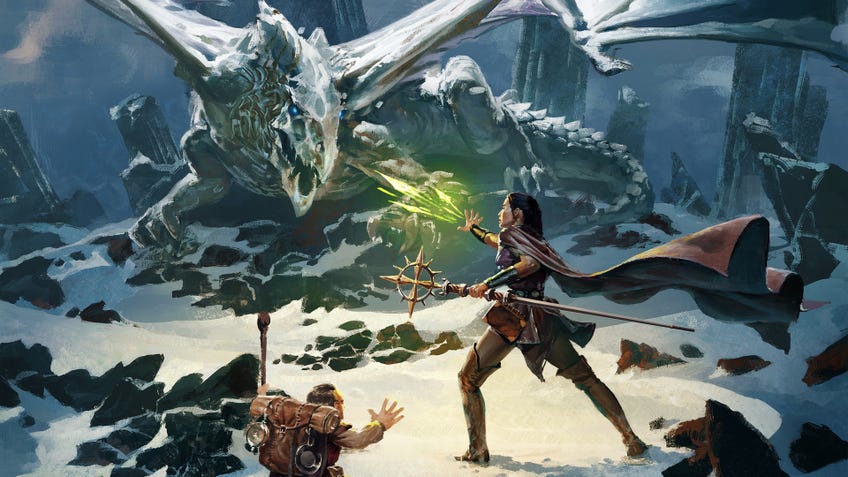
As a sorcerer, your character has a firm control over the magic they wield - most of the time - which means that they’re able to manipulate it in various ways that other spellcasters in D&D 5E cannot do. This is a feature called Metamagic, which your sorcerer acquires at third level.
Initially, your sorcerer will only be able to select two options for spell manipulation to begin with, but will gain another option at 10th level and another at 17th level. These options are additional aspects you can apply to the spells you cast that provide you with small benefits whenever you do so. A spell can only be manipulated by one option, which means that you’ll have to think carefully about the best Metamagic options to take and which to apply to what spells.
This is also where Sorcerer Points can come into play, as your character is able to spend them to perform these examples of Metamagic. They can also spend additional points to increase the effectiveness of a Metamagic option.
The options you take really depends on your current arsenal of spells and how much your sorcerer will be able to actually benefit from taking them. For example, if you have more close-combat spells than ranged ones, taking the Distant Spell option might be inadvisable. Instead, you might want to choose the Empowered Spell option, which enables you the chance to re-roll your damage dice in the hopes of scoring better damage output on your spell. Alternatively, you could choose the Subtle Spell option if your sorcerer has any spells that are suited to covet situations - such as Disguise Self - as it allows them to cast spells without having to move their hands or speak.
Be aware that some of these Metamagic options cost multiple Sorcery Points to perform, which means that your sorcerer is trading off the chance to use fewer options for a potentially more beneficial manipulation. It really is up to you which approach you value more.
Which Sorcerous Origin should you pick?

There are many different Sorcerer Origins to pick from in Dungeons & Dragons 5E, each with their own unique path of level progression. From having a Clockwork Soul and gaining the power to temporarily control time to acquiring a Psionic Soul after visiting the Feywilds - enabling your sorcerer to directly invade other people’s minds - there are a wide variety of Sorcerous Origins out there. The fun thing about Sorcerous Origins is that choosing one doesn’t only give you access to cool new powers, it also helps to shape who your character is as a person. A Sorcerous Origin is part of your character’s background and can even manifest in a physical form, changing their appearance in some way.
You can have a search for the Sorcerous Origin options available in the various sourcebooks released for Dungeons & Dragons, as well as those included on homebrew - or fan-made - websites, for an overview of what is out there. For this particular class guide, we’re going to be focusing on the two Sorcerous Origins included in the Player’s Handbook. The two options you have in the D&D 5E Player’s Handbook are either a Draconic Bloodline - meaning that your character is either distantly descended from a dragon or that an ancestor made a pact with a dragon - or a Wild Magic origin, indicating that your character has been exposed to the source of their abilities through some chance encounter or sudden accident.
Choosing between these two options depends upon whether you want your sorcerer to focus upon more elemental forms of magic or a broader range of spells. Whilst taking a Draconic Bloodline origin will give your Sorcerer abilities linked to the type of dragon they’re linked to, Wild Magic is rather more unpredictable in the kind of benefits your character will gain - but they’re certainly guaranteed to be fun. Either origin can work with a wide variety of sorcerer spells, so whichever you decide on may be driven by the specific features you gain or simply by what you think fits best with your character’s personality.
Draconic Bloodline
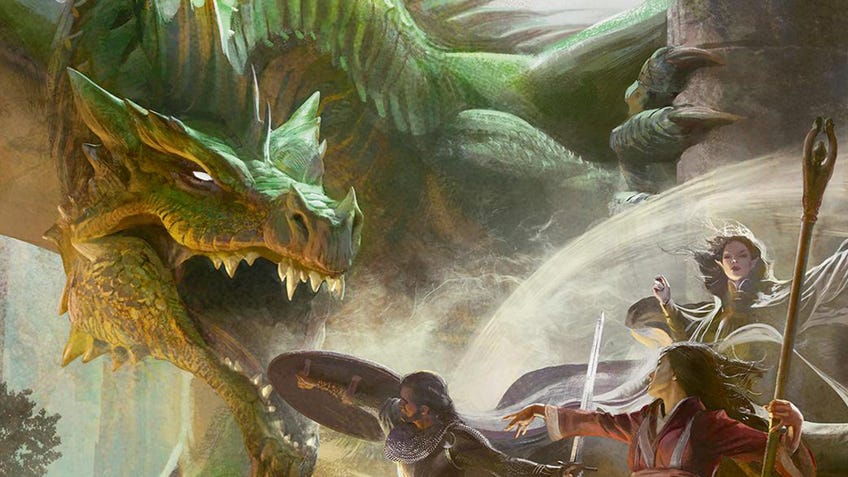
Whilst it would make a lot of thematic sense to have your sorcerer character be a dragonborn with a Draconic Bloodline, they don’t have to be one to take this option. It makes just as much sense to have had an ancestor of your character be friends with a dragon at some point, or even to have stolen some power from a dragon in an ambitious feat. Thinking about the story behind your character’s Sorcerous Origin is all part of the fun, so it’s worth conjuring up a tale or two about it.
Unlike many other class specialisations in D&D 5E - such as with bards or rangers - your character takes their Sorcerous Origin straight away at first level. Taking Draconic Bloodline requires that you select which type of dragon your sorcerer is connected to, as this will shape the kind of benefits your character will get. Each dragon type is associated with a form of elemental damage - for example, black and copper dragons give out acid damage, whereas gold and red dragons breathe fire.
Whichever type of dragon you choose becomes important when your sorcerer hits sixth level and gains the Elemental Affinity ability, as this grants them additional damage whenever they perform a spell of the same elemental type. For example, if you chose a black dragon to be your Sorcerer’s Draconic Bloodline connection, whenever they cast a spell like Acid Splash they can add their charisma modifier to their damage roll. They can also spend a Sorcery Point to gain resistance to this type of damage for up to an hour. Even though your sorcerer doesn’t get this ability until sixth level, you might want to think about the kind of spells you want your character to have and choose a Draconic Bloodline that fits that.
Aside from Elemental Affinity, your sorcerer also gets the Draconic Resilience ability - giving them an additional hit point every time they level up, and a baseline armour class of 13 plus their dexterity modifier. This will help your character to bulk up somewhat, and become a little studier during combat. At 14th level, your sorcerer gains the Dragon Wings feature, which allows them to sprout wings from their back and fly. Yes, really. Flying in combat doesn’t make you any faster, but it does affect how certain enemies can attack you. Summoning these wings takes a bonus action and will remain there until you dismiss them.
Finally, at 18th level, your sorcerer acquires the Draconic Presence ability. This feature enables your character to channel the power of their ancestor to cause their foes to be awestruck or terrified in battle. Spending five Sorcery Points actives this feature, which causes the aura of your choice to spread across an area of 60 feet for one minute - or until your character loses their concentration - and charm or frighten affected creatures if they fail a wisdom saving throw against your sorcerer’s spell DC. This is an excellent ability to use during fights with larger numbers of enemies that are lacking in the wisdom department, potentially shifting the entire shape of the battle.
Wild Magic

Whilst the Draconic Bloodline origin has a much more solid - if a little predictable - story, the Wild Magic origin goes completely off the rails by comparison. If your sorcerer has a Wild Magic origin, it implies that they sort of stumbled into their powers by a fantastical accident of some kind or that they may have befriended some kind of demon that decided to give them powers. More so than the Draconic Bloodline, do feel free to play with the story of this Sorcerous Origin as it provides a lot more leeway for players to get creative.
Either way, as with the Draconic Bloodline origin, taking a Wild Magic origin means that your sorcerer will benefit from their specialisation at first level. In this case, they will gain access to the Wild Magic Surge ability, which can be either a blessing or a curse depending on whether luck is on your character’s side or not. Every time your sorcerer casts a spell of first level or higher, the DM can ask you to roll a d20. If you roll a 1 you then need to roll a d100 and apply the matching numbered result from the Wild Magic Surge table - which you can find in the D&D 5E Player’s Handbook or online.
The effects found on the Wild Magic Surge table can include positive things - such as casting a spell at a significantly higher level than your sorcerer is otherwise capable of doing or gaining resistance to all damage - and potentially negative outcomes, such as causing one of your teammates to become randomly poisoned or not being able to speak because pink bubbles keep emerging from your mouth. If your Wild Magic Surge results in a spell being cast and you have used a Metamagic effect on your previous spell, the Wild Magic spell will not be affected.
At higher levels, your sorcerer will be able to gain more control over their Wild Magic Surge ability. 14th level will grant your character the Controlled Chaos feature, which allows them to roll twice whenever they roll for the Wild Magic Surge table and take the number they prefer.
Aside from the Wild Magic Surge ability, your sorcerer will be able to gain advantage on an attack, ability check or saving throw roll from first level. This feature - called Tides of Chaos - can be regained either after a long rest or after the player has made a Wild Magic Surge roll. Bend Luck, which your sorcerer gets at sixth level, allows them to roll a d4 and apply the result to any other creature’s attack, ability or saving throw roll as either a positive or negative modifier.
What’s the best race for a sorcerer in D&D 5E?
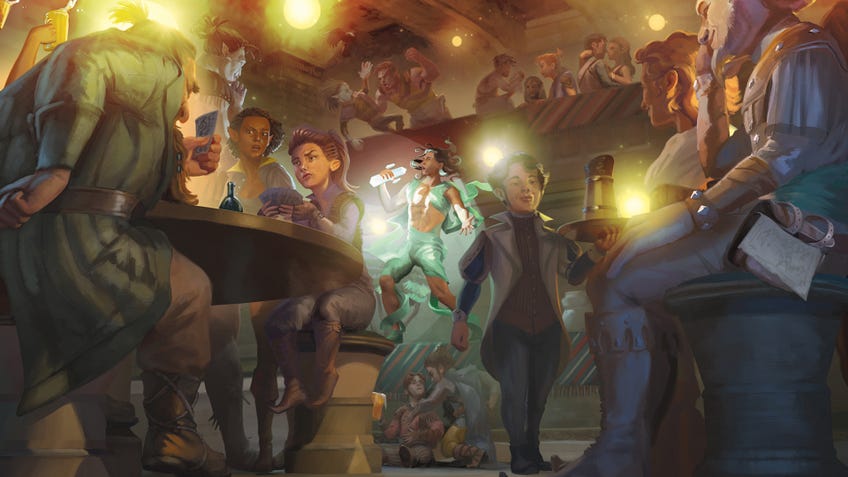
It’s important to remember that any race works with any class in Dungeons & Dragons. You can even forgo the need to take the set stat increases and traits associated with the various races using the Tasha’s Cauldron of Everything sourcebook, an option that will be made available for all players to access for free. However, if you are looking to create the most optimised build possible using the traditional rules, here are the best races to use for a sorcerer in D&D 5E.
Dragonborns are an obvious pick considering that they receive an increase to their charisma and strength ability scores. Charisma is the ability score that sorcerers use to create their spell save DC score and their spell attack modifier, thereby making it a pretty important trait when it comes to creating your character. They also have a Draconic Ancestry trait that allows them the ability to use an elemental breath attack of their choice and to gain damage resistance in the matching trait. Combining a Dragonborn with the Draconic Bloodline origin can make for one hell of an elemental sorcerer.
Making your sorcerer a tiefling is also a very good shout, considering that they get increases to their charisma and intelligence scores, which gives them an advantage when casting spells as a sorcerer. What’s more, tieflings are resistant to fire damage - perfect if you’re choosing a red or gold Draconic Bloodline origin or an origin that favours fire spells - and gain additional spells at third and fifth levels by default. These two aspects make them especially good choices for creating a sorcerer.
Another possible choice is the half-elf race, as they are somewhat magically inclined, with an advantage against being charmed and being unable to be put to sleep via magic. Both these aspects give them an edge when facing off against rival spellcasters, with their Darkvision ability serving as the cherry on the cake.











